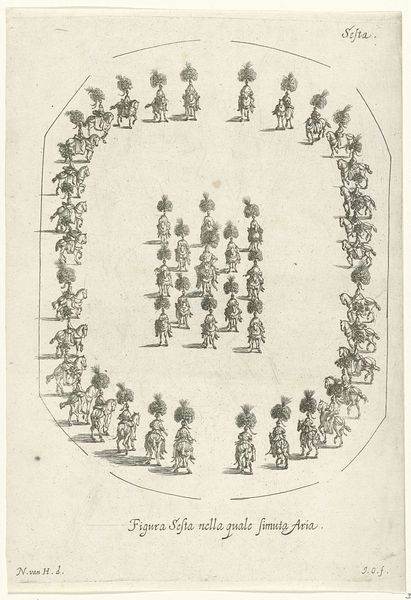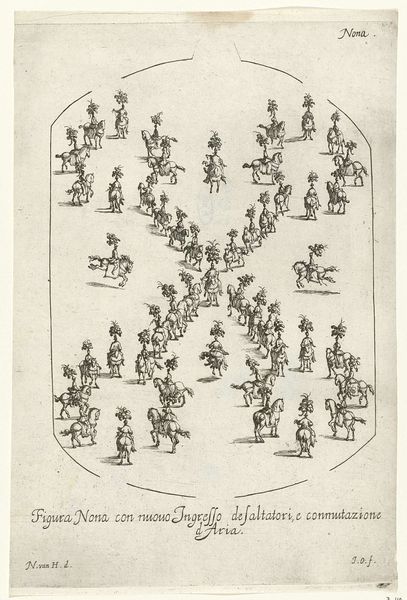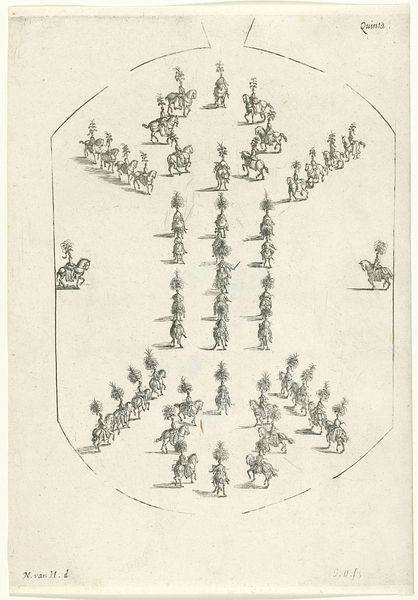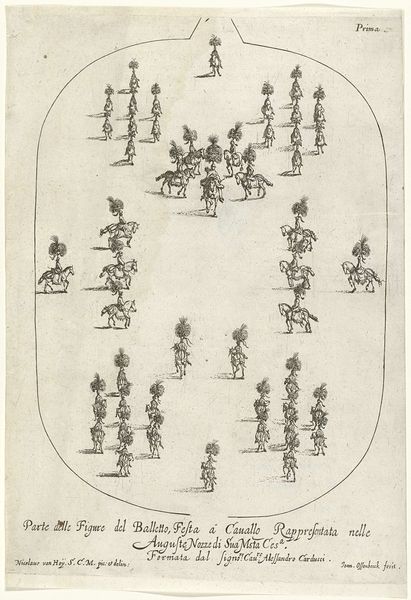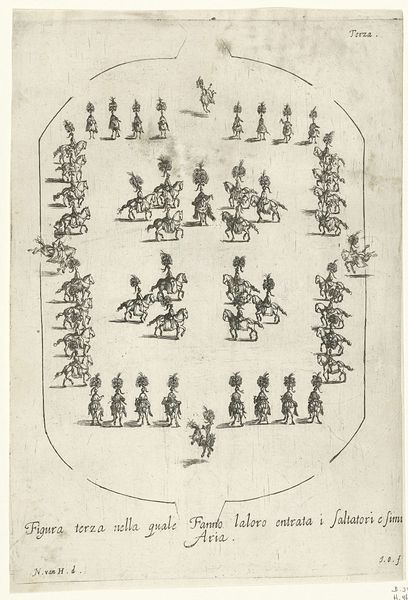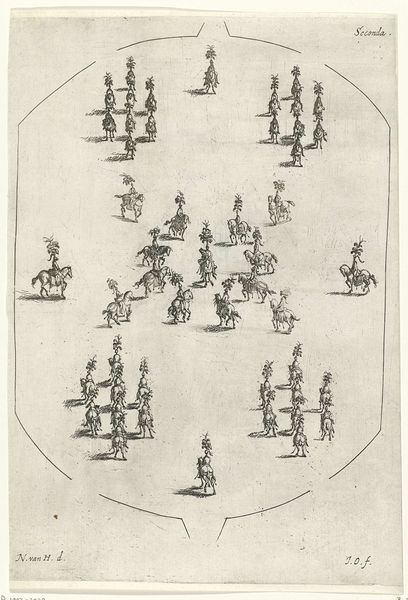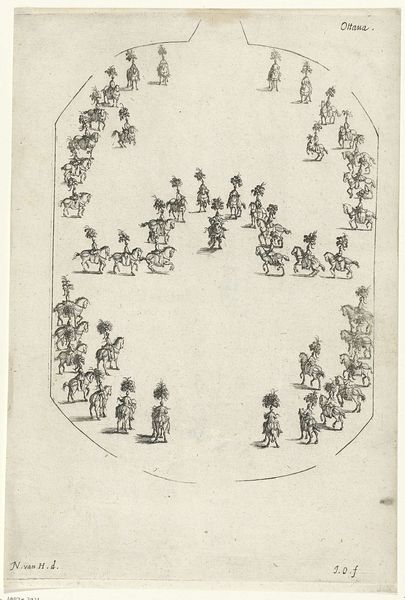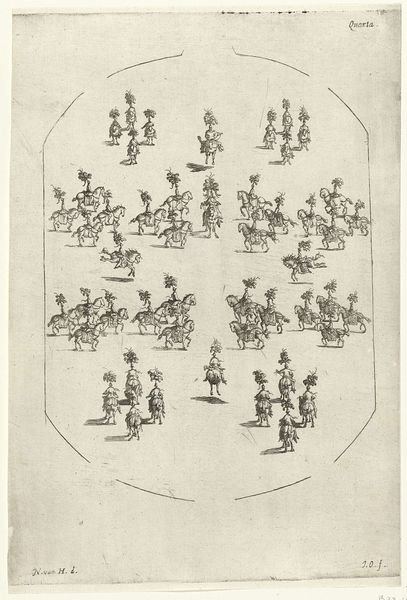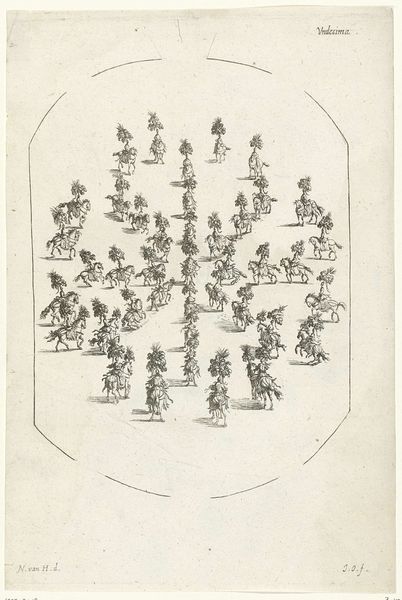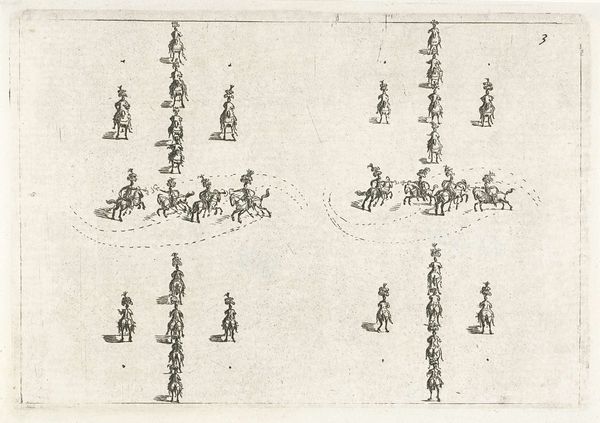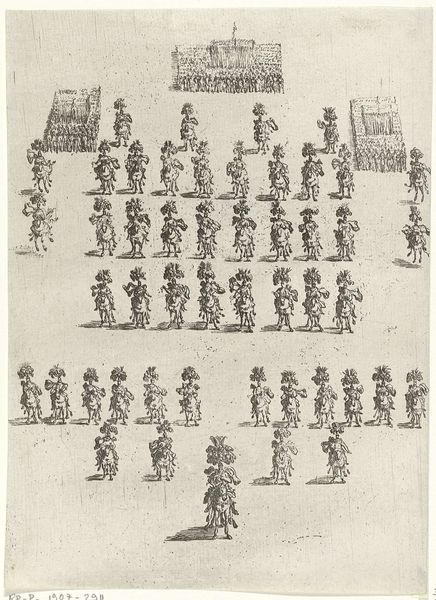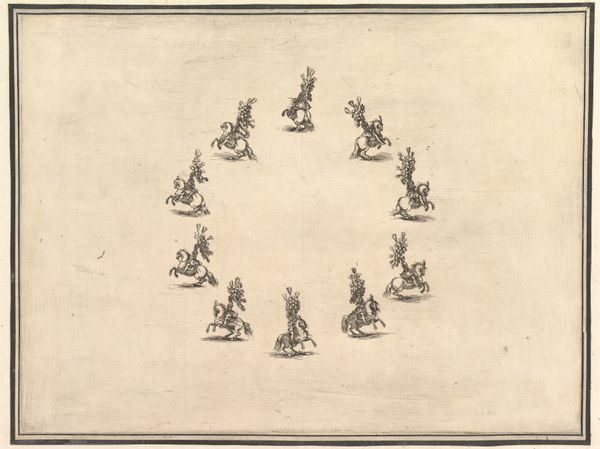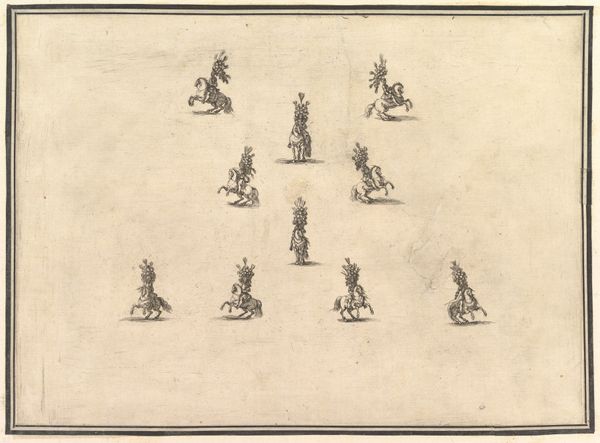
drawing, ink, engraving
#
drawing
#
baroque
#
old engraving style
#
landscape
#
figuration
#
ink
#
geometric
#
engraving
Dimensions: height 280 mm, width 194 mm
Copyright: Rijks Museum: Open Domain
Editor: Here we have "Ruiterformaties (Settima)" from 1667, an ink and engraving by Jan van Ossenbeeck. The organization of riders on horses is quite striking. They're arranged in such a precise, geometric formation. It reminds me a bit of choreography. What is your take on this work? Curator: It’s fascinating to see this piece as a historical artifact demonstrating the intersection of art, power, and spectacle. Courtly displays like this served important social and political functions. These "ruiterformaties," or equestrian formations, were not just aesthetic exercises. They reinforced social hierarchies. Editor: So, these displays were intended for more than just entertainment? Curator: Exactly. The precision and control exhibited by both horse and rider demonstrated discipline, a virtue highly prized by the aristocracy, particularly within military contexts. Think of the artwork as a visual document, revealing how elites legitimized their power through elaborate public performances. How do you perceive the space within the engraving itself? Editor: I see the figures, meticulously detailed, and their arrangement creates a sense of order and control. The surrounding negative space really emphasizes this sense of organized power, like a stage upon which a specific set of actions must occur in sequence. Curator: Precisely! The performance space and this composition’s geometry would've been instantly recognizable by audiences of the time, signaling both authority and the resources necessary to command such events. The "Settima," indicated in the title, possibly denotes a specific formation within a broader program, maybe for purposes of messaging or a way to showcase strategic battle tactics. Editor: It's really eye-opening to consider how such an artistic composition actively participates in constructing and reinforcing societal structures. Thank you! Curator: Indeed. Understanding art in this context allows us to analyze how spectacles and displays contribute to the larger political landscape, even today.
Comments
No comments
Be the first to comment and join the conversation on the ultimate creative platform.
